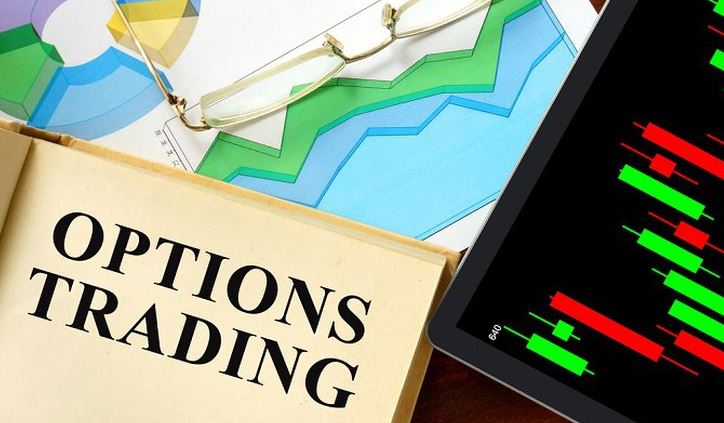The call and put options To Master Options Trading Strategies
If you purchase a contract for an option, it is going to grant you the right, but not the obligation (this is what futures are), to either purchase or sell the underlying asset at a set price either on, or even before, a certain date that is listed in the contract. There are two types of options that you can work with, a put option and a call option. With the call option, you get the right to purchase the stock during that time. And with a put option, you get the right to sell the stock.
One way that you can think about a call option is like having a down payment for a future purpose. Let’s look at an example of how this can work:
A potential homeowners sees that in an area of their town, there is a new development that is about to go up. This homeowner may decide that they want the right to purchase one of the homes in that area in the future, but they only want to be able to exercise that right once there are certain developments built around that area. Maybe they want to make sure that some schools are built there first or some other great amenities before they choose to purchase.
These kinds of circumstance would then be able to affect the decision of the homeowner to purchase the home in that area. The potential home buyer would benefit from the option of buying or not depending on whether the promised amenities show up or not and they can agree to purchase the homes at a predetermined level.
This can benefit the homeowner in several ways. If they get in early enough, the developer may offer the home for a lower price. Or they may offer it at market value for that time, but then the prices of that area skyrocket. The homebuyer would still stay at the lower rate and get a great deal on these new homes in the area. Of course, this isn’t going to be done for free. The potential buyer would have to put down a payment to help lock in that right. And once that happens, the buyer has purchased an option.
When we are talking about an option, this cost is going to be known as the premium. It is the price of the contract for the option. With the example above, you may need to pay a deposit of $20,000 that the buyer would need to pay to the developer. Now, let’s say that a few years have passed and the developments and zoning are going through. If everything is going as planned, the home buyer can choose to exercise the option and then buys the home for the original price, minus the down payment.
Even if the market value of that home has changed and gone by, even if it has doubled, the home buyer would still stay with the original price because that is what was in the options contract and the developer will need to honor it. This puts the home buyer in a good position because they get to move to a great location, and they got it for a great deal without having to worry about the higher price if the market price went up.
Now, there is also an alternate scenario that could happen. Let’s say that you wait the three years of the expiration date and then zoning process isn’t done. The homebuyer decides to not exercise their right to purchase the home. But them a year later, the zoning laws do go into place. However, since they happened after the expiration of your contract, you would have to pay whatever the market price is at the time. In either of these cases, the developer will be able to keep the $20,000 that you put down on the contract.
Then you can work with the put option. This is going to be similar to an insurance policy. If you own your personal home at this time, you are likely familiar with the idea of owning some homeowner’s insurance as well. You will purchase this policy in order to protect your home from any damage that may occur. You will pay for some kind of premium, for usually a year or so. The policy is going to have a face value and will protect you if the home is damaged along the way for some reason.
What if, instead of protecting your home, your asset was a stock or another investment too. This is what is going to happen when we look at options trading and doing a put option. If you have a S&P 500 index portfolio, you have a choice to purchase one of these put options.
An investor may choose to do this if they fear that a bear market is going to happen soon, and they refuse to lose more than ten percent of their long position in the portfolio. If the S&P 500 is currently trading at $2500, the trader is able to purchase a put option that provides them with the right to sell that index at $2250 at any point during a certain expiration date, such as within a few years. Then, if in six months or twelve months or another time period in that two years, the market ends up crashing by twenty percent, which is 500 points on the index, the trader has made 250 points by being able to still sell the index at $2250 when it is trading at $2000.
This is a great option in order to help the trader only lose ten percent on their portfolio, even if the market goes down by twenty percent, or even more. Of course, going through and purchasing the option is going to carry some kind of cost, known as the premium, and if the market doesn’t end up dropping like you predicted during that time period, the maximum that you will lose on the option will only be the premium that you spent in the beginning.
So, with the put option, you are basically trying to support some of the stocks and indexes that you own. If you are worried that the market is going to head downward, then you will use this kind of option to help limit your losses if this does happen. The put option is a great way for you protect your investments and can be a great choice to go with here.
Now, these examples are going to demonstrate some points that are really important. First, when you purchase an option, you get the right, but not the obligation, to do something with it. For stocks and many options on the futures market, it is not a requirement that you exercise your right to sell or buy these stocks when they reach their expiration date. If things don’t go the way that you would like, you can easily walk away and not purchase the option at all, or sell it, and all you will lose here is your premium, and nothing else.
However, if you find that your option still has value when it reaches the expiration, then generally the broker is going to exercise the option automatically for you. In the put example that we had before, the S&P 500 fell to zero when it got to the expiration. But even with the fall, the 2250 put is still going to be worth 2250. At expiration, the put option that you purchased would settle for the cash value, which caused a large gain on the hedge. But, fi the S&P 500 ended up at 3000 by the expiration date, then the 2250 put that you have is seen as worthless.
Second, the one thing that you will really like about options is the limited amount of risk that you take on with them. At the most, you are only going to lose the premium that you paid in on the asset or the contract. If things go well, you get a good deal and make a profit. If things go poorly, then all you will lose is the amount that you invested in the beginning.
The third thing about the options you should know is that you are purchasing a contract for the underlying asset, and not for the actual asset itself. Its price is going to come from the price of that underlying asset. This is why the option is going to be known as a derivative. In most cases, the underlying asset is going to be a stock or another stock index. But there are certainly other types of investments that can be done with this as well. You can choose to work with other derivatives, commodities, foreign currencies, and bonds in order to get started with options trading.
Buying and selling calls and puts:
And before we end this chapter, it is important to know the cardinal coordinates that come with options and options trading to help you make smart decisions with your trading. These will include:
- When you purchase the underlying asset, it is going to give you a long position. When you purchase a call option, it will give you a potential long position in the underlying stock. When you decide to short sell the stock, this means that you are going to have a short position instead. But if you sell either an uncovered or a naked call, it is going to give you a potential short position on that underlying stock to deal with.
- When you purchase a put option, it is going to give you a potential short position on that underlying asset. If you sell an unmarried or naked put, it helps you to gain a potential long position on that underlying stock. If you can keep these four scenarios separate, you will find that your investing is easier to work with overall.
- People who purchase the options are going to be known as the holders. But those who sell the options are going to be called the writers. Some of the important distinctions that show up between the writers and the holders include:
a. Call holders and put holders are going to no have an obligation to sell or buy. They have the choice to exercise this right if they need. This can limit some of the risk of the buyers of options to just the amount of the premium that they spent. Call writers and put writers are going to be obligated to sell or buy the option if it expires in the money. This means that the seller may need to make good on a promise to sell or buy. This is also going to imply that option sellers have exposure to more and in some instances, it implies that the options have more exposure and in some cases they have unlimited risks. This means that the writers of this process have a higher amount of risk, and they lose more money on the premium of the option.
There are a lot of different parts that come with options
trading, and a lot of people can benefit from doing this kind of investment.
Understanding how it works and some of the steps that you can use to see
success can make it a much more profitable endeavor.




